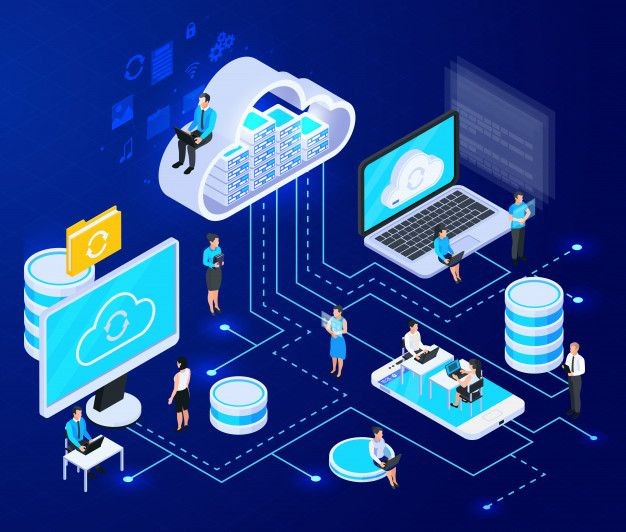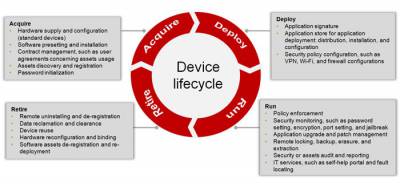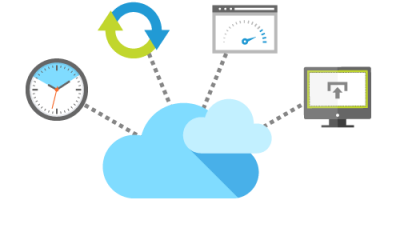Network Management
Pro-actively monitor infrastructure, applications and end user experience. Network management solutions to help automatically monitor routers, firewalls, switches and create a baseline of network activity. Identify the root cause of issues and get notified before they can impact your business
Why Monitor the Network?
Business success relies on your network infrastructure to deliver critical applications seamlessly to end user and customers. Network complexity continues to grow with cloud-hosted initiatives, endpoint diversity, software-defined architectures, distributed data centers, edge computing which create new blind spots in your network.
40%
of network problems are first detected and reported by the end user
70%
of network engineers spend their time reacting to reported network problems
30%
of your time is spent on proactive projects that support business goals
Components of a Network Management System
Network Discovery
Understanding the topology of your network allows you to visualize the network and understand the relationships and what has changed to reduce the area for fault detection
Device Configuration Management (NCCM)
Networks are dynamic, with frequent additions and removal of devices. When a new device is added ensuring that it has the approved configuration, as well as existing devices have the latest configuration and are not updated or changes that are not approved creating vulnerabilities.
NCCM component of a network management systems should ease the task of managing changes in network configuration, allow you to discover all the network elements, giving you advanced inventory reports and topology diagrams, backup the configuration of each device, check the policy and the compliance for each device.
Device Fault Management
Allows you to get automatic alerts when a device interface or application has failed or has broken a performance SLA threshold. This should give you root cause analysis, so your network or application team can repair and reduce your mean time to repair. A common perception of a fault management system is to identify all the events.
Any happening that has an impact on the network’s performance is called an event. It can be informational in nature, a cleared event, warning message, a trouble sign or even a critical fault. If all these events are pushed to the administrator, he would be drowned and helpless. Instead, an intelligent NMS must sort the events and only actionable faults must be presented to the administrator to work on.
Network Performance Management
Using indicators like bandwidth, packet loss, latency uptime on routers and switches and other simple network management protocol (SNMP) enabled devices should allow you to develop a baseline and help you in identifying and remove network bottlenecks. The NM system should simplify the task of monitoring network performance by detecting degraded network performance and help in reconfiguring the network to alleviate the problem.
Network Traffic Analysis
A valuable part of network monitoring solution as the information available at the Network Layer is insufficient to spot overall traffic patterns and it misses malicious traffic. You can’t manage a network without knowing what’s going across it and what it’s doing. Analyzing at the Application Layer gives you a better overview of network activity.
For NTA to work we need to set up a visibility architecture to collect, store and analyze the network traffic at different points in the network by collecting the packets or flow records and then consolidate this data to develop a baseline of what applications are being used and by who. This allows you to take action immediately when abnormal traffic patterns or irregular network activities are detected.
Application Response Time
Measures the time it takes an application or a server to return the results submitted by an end user. By measuring this key metric you can identify the root cause of slow application performance by discovering how the underlying infrastructure may be affecting application health.
Response times can be affected by factors like network bandwidth, the volume of users and requests submitted, and average think time. Key metrics for Application response time
- Request per Second
- Data in and out
- Average Response time
- Peak response time
- CPU utilization
Benefits of an Application Performance Management System
- Monitor user experience, and alert on SLA violations as soon as they happen, and before they are critical
- Trending and historical views of application performance over time
- Accelerate troubleshooting and remediation
- Eliminate “finger-pointing” among teams, promoting cooperative approaches to solving problem
- Detect early warning signs of performance problems, and take preventive action
- Understand the relationship among applications and infrastructure components
- Make informed decisions about infrastructure improvements related to application performance
- Reduce the risk of delay or catastrophic failure by verifying and acting on the root cause
Visualize Your Network
Spend less time documenting your IT network and more time managing it with automated network discovery and mapping
Infosim StableNet Discovery Engine
Auto-discovery of all the network infrastructure assets using different discovery mechanisms to ensure a complete inventory of the Network. Infosim Captures full device information including chassis, card/slot, daughter card, serial and part numbers, power supply and environmental information.
VIAVI Observer Infrastructure
Observer Infrastructure can automatically create a network during the discovery. It uses its advanced intelligence to construct comprehensive maps of your entire network, systems, and applications. The nesting function allows multiple items to be represented within a single icon.







